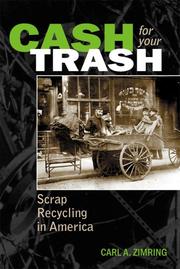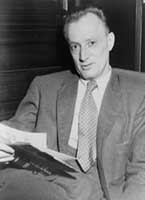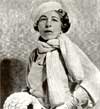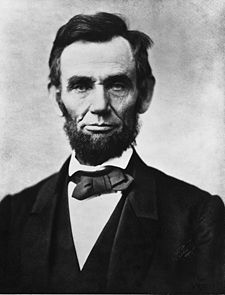
Carl A. Zimring
Born:
Pen Name: None Connection to Illinois: Zimring has an M. A. in Social Sciences from the University of Chicago and taught at Roosevelt University, where he helped create the first sustainability studies BA program in Illinois. Biography: Carl Zimring is an environmental historian interested in how attitudes concerning waste shape society, culture, institutions, and inequalities. He is the author of several books that focus on aspects of the histories of technology and the environment, with particular attention to discards and the systems that create, classify, and manage discards. Zimring joined Pratt in 2012 to create the Institute’s sustainability studies minor, which he coordinated until 2022. Before arriving in Brooklyn, he helped create the first sustainability studies BA program in Illinois at Roosevelt University. He previously taught at Oberlin College, Michigan Technological University, the University of Canterbury in New Zealand, and Carnegie Mellon University. Research support includes funding from the Smithsonian Institution, the Hagley Museum and Library, Columbia University Seminars, the U.S. Environmental Protection Agency, and the American Society for Environmental History’s Samuel P. Hays Fellowship.
Awards:
LinkedIn: https://www.linkedin.com/in/carlzimring/
Twitter: https://x.com/carlzimring
Web: https://carlzimring.com/
Web: https://www.pratt.edu/people/carl-zimring/
Wikipedia: https://en.wikipedia.org/wiki/Carl_A._Zimring
Selected Titles
 |
Aluminum Upcycled: Sustainable Design in Historical Perspective (Johns Hopkins Studies in the History of Technology) ISBN: 1421421860 OCLC: Johns Hopkins University Press 2017 Tracing the benefits―and limitations―of repurposing aluminum. Besides being the right thing to do for Mother Earth, recycling can also make money―particularly when it comes to upcycling, a zero waste practice where discarded materials are fashioned into goods of greater economic or cultural value. In Upcycling Aluminum, Carl A. Zimring explores how the metal’s abundance after World War II―coupled with the significant economic and environmental costs of smelting it from bauxite ore―led to the industrial production of valuable durable goods from salvaged aluminum. Beginning in 1886 with the discovery of how to mass produce aluminum, the book examines the essential part the metal played in early aviation and the world wars, as well as the troubling expansion of aluminum as a material of mass disposal. Recognizing that scrap aluminum was as good as virgin material and much more affordable than newly engineered metal, designers in the postwar era used aluminum to manufacture highly prized artifacts. Zimring takes us on a tour of post-1940s design, examining the use of aluminum in cars, trucks, airplanes, furniture, and musical instruments from 1945 to 2015. By viewing upcycling through the lens of one material, Zimring deepens our understanding of the history of recycling in industrial society. He also provides a historical perspective on contemporary sustainable design practices. Along the way, he challenges common assumptions about upcycling’s merits and adds a new dimension to recycling as a form of environmental absolution for the waste-related sins of the modern world. Raising fascinating questions of consumption, environment, and desire, Upcycling Aluminum is for anyone interested in industrial and environmental history, discard studies, engineering, product design, music history, or antiques. |
 |
Cash For Your Trash: Scrap Recycling in America ISBN: 9780813546940 OCLC: 57549509 Rutgers University Press, New Brunswick, N.J. : ©2005. In Cash for Your Trash, Carl A. Zimring provides a history of scrap recycling, from colonial times to the present. Moving beyond the environmental developments that have shaped modern recycling enterprises, Zimring offers a unique cultural and economic portrait of the private businesses that made-large-scale recycling possible. Because it was particularly common for immigrants to own or operate a scrap business in the nineteenth century, the history of the industry reveals much about ethnic relationships and inequalities in American cities. Readers are introduced to the scrapworkers, brokers, and entrepreneurs who, like the materials they handled, were often marginalized. Integrating findings from archival, industrial, and demographic records, Cash for Your Trash demonstrates that over the years recycling has served purposes far beyond environmental protection. Its history and evolution reveals notions of Americanism, the immigrant experience, and the development of small business in this country.--Jacket. |
 |
Clean and White: A History of Environmental Racism in the United States ISBN: 1479826944 OCLC: NYU Press 2016 Clean and White offers a history of environmental racism in the United States focusing on constructions of race and hygiene When Joe Biden attempted to compliment Barack Obama by calling him “clean and articulate,” he unwittingly tapped into one of the most destructive racial stereotypes in American history. This book tells the history of the corrosive idea that whites are clean and those who are not white are dirty. From the age of Thomas Jefferson to the Memphis Public Workers strike of 1968 through the present day, ideas about race and waste have shaped where people have lived, where people have worked, and how American society’s wastes have been managed. In the wake of the civil war, as the nation encountered emancipation, mass immigration, and the growth of an urbanized society, Americans began to conflate the ideas of race and waste. Certain immigrant groups took on waste management labor, such as Jews and scrap metal recycling, fostering connections between the socially marginalized and refuse. Ethnic “purity” was tied to pure cleanliness, and hygiene became a central aspect of white identity. Carl A. Zimring here draws on historical evidence from statesmen, scholars, sanitarians, novelists, activists, advertisements, and the United States Census of Population to reveal changing constructions of environmental racism. The material consequences of these attitudes endured and expanded through the twentieth century, shaping waste management systems and environmental inequalities that endure into the twenty-first century. Today, the bigoted idea that non-whites are “dirty” remains deeply ingrained in the national psyche, continuing to shape social and environmental inequalities in the age of Obama. |
 |
Coastal Metropolis: Environmental Histories of Modern New York City (History of the Urban Environment) ISBN: 0822946521 OCLC: University of Pittsburgh Press 2021 Built on an estuary, New York City is rich in population and economic activity but poor in available land to manage the needs of a modern city. Since consolidation of the five boroughs in 1898, New York has faced innumerable challenges, from complex water and waste management issues, to housing and feeding millions of residents in a concentrated area, to dealing with climate change in the wake of Superstorm Sandy, and everything in between. Any consideration of sustainable urbanism requires understanding how cities have developed the systems that support modern life and the challenges posed by such a concentrated population. As the largest city in the United States, New York City is an excellent site to investigate these concerns. Featuring an array of the most distinguished and innovative urban environmental historians in the field, Coastal Metropolis offers new insight into how the modern city transformed its air, land, and water as it grew. |
 |
Encyclopedia of Consumption and Waste ISBN: 1412988195 OCLC: SAGE Publications, Inc 2012 Archaeologists and anthropologists have long studied artifacts of refuse from the distant past as a portal into ancient civilizations, but examining what we throw away today tells a story in real time and becomes an important and useful tool for academic study. Trash is studied by behavioral scientists who use data compiled from the exploration of dumpsters to better understand our modern society and culture. Why does the average American household send 470 pounds of uneaten food to the garbage can on an annual basis? How do different societies around the world cope with their garbage in these troubled environmental times? How does our trash give insight into our attitudes about gender, class, religion, and art? The Encyclopedia of Consumption and Waste explores the topic across multiple disciplines within the social sciences and ranges further to include business, consumerism, environmentalism, and marketing to comprise an outstanding reference for academic and public libraries. |
 |
Looking for Lemont: Place & People in an Illinois Canal Town ISBN: 0890651426 OCLC: 30546767 Committee on Geographical Studies, University of Chicago, Chicago : 1994. |
 |
Technology and the Environment in History (Technology in Motion) ISBN: 1421438992 OCLC: Johns Hopkins University Press 2020 New perspectives on how envirotech can help us engage with the surrounding world in ways that are more sustainable for humanity―and the planet. Today's scientists, policymakers, and citizens are all confronted by numerous dilemmas at the nexus of technology and the environment. Every day seems to bring new worries about the dangers posed by carcinogens, "superbugs," energy crises, invasive species, genetically modified organisms, groundwater contamination, failing infrastructure, and other troubling issues. In Technology and the Environment in History, Sara B. Pritchard and Carl A. Zimring adopt an analytical approach to explore current research at the intersection of environmental history and the history of technology―an emerging field known as envirotech. Technology and the Environment in History They discuss the important topics, historical processes, and scholarly concerns that have emerged from recent work in thinking about envirotech. Each chapter focuses on a different urgent topic: • Food and Food Systems: How humans have manipulated organisms and ecosystems to produce nutrients for societies throughout history. • Industrialization: How environmental processes have constrained industrialization and required shifts in the relationships between human and nonhuman nature. • Discards: What we can learn from the multifaceted forms, complex histories, and unexpected possibilities of waste. • Disasters: How disaster, which the authors argue is common in the industrialized world, exposes the fallacy of tidy divisions among nature, technology, and society. • Body: How bodies reveal the porous boundaries among technology, the environment, and the human. • Sensescapes: How environmental and technological change have reshaped humans' (and potentially nonhumans') sensory experiences over time. Using five concepts to understand the historical relationships between technology and the environment―porosity, systems, hybridity, biopolitics, and environmental justice―Pritchard and Zimring propose a chronology of key processes, moments, and periodization in the history of technology and the environment. Ultimately, they assert, envirotechnical perspectives help us engage with the surrounding world in ways that are, we hope, more sustainable and just for both humanity and the planet. Aimed at students and scholars new to environmental history, the history of technology, and their nexus, this impressive synthesis looks outward and forward―identifying promising areas in more formative stages of intellectual development and current synergies with related areas that have emerged in the past few years, including environmental anthropology, discard studies, and posthumanism. |
 |
The Industrial Revolution in the Upper Illinois Valley ISBN: 0890651418 OCLC: 29794434 Committee on Geographical Studies, University of Chicago, Chicago : 1993. |




